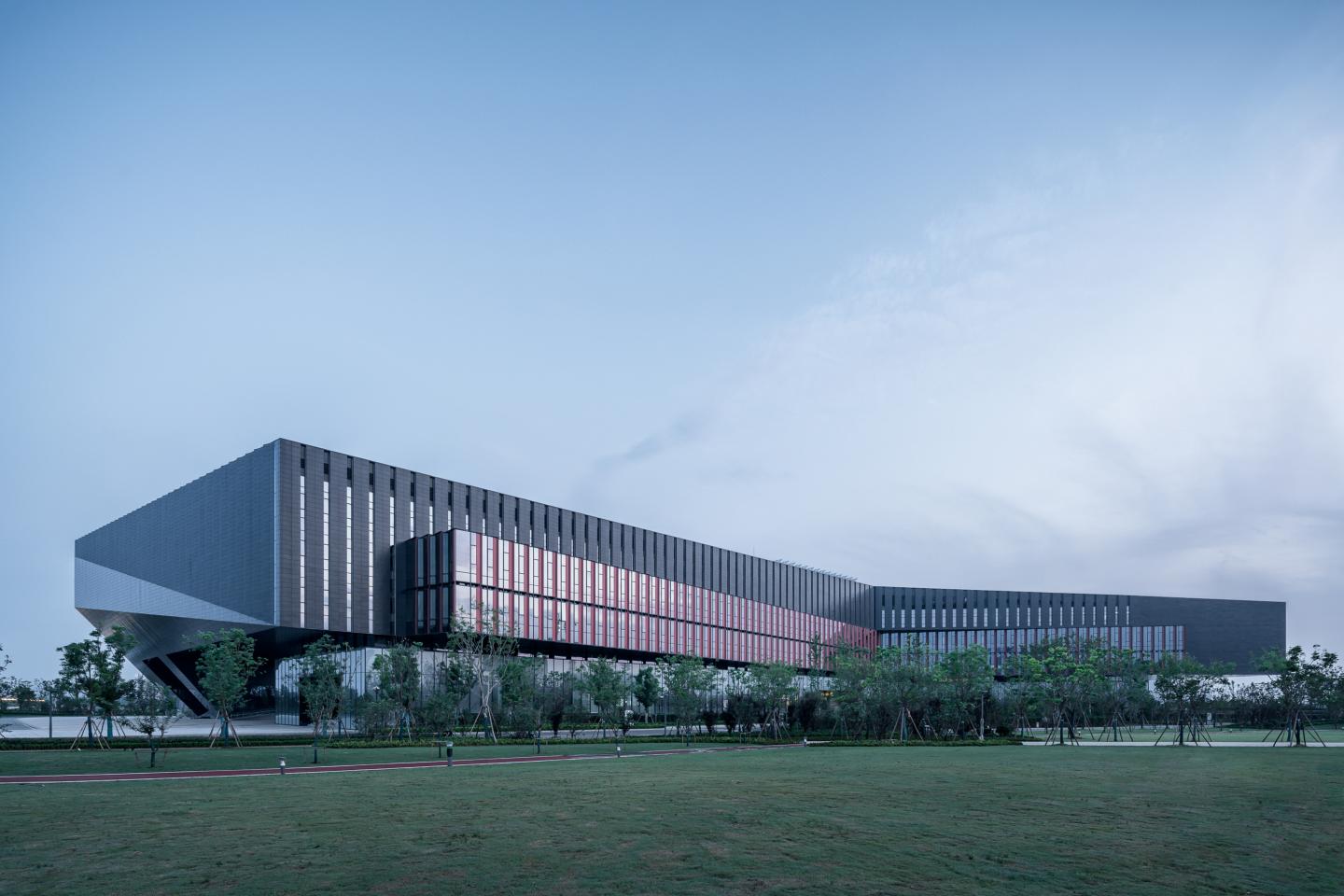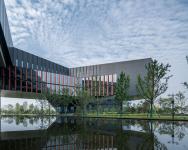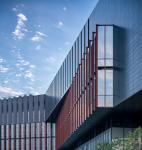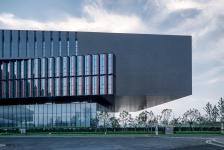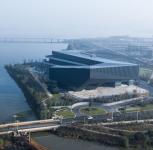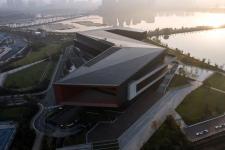Like other economic development zones that have sprung up in China, Wuhan Jiangxia District, where Tangxun Lake, the largest urban lake in Asia is located, is entering a period of rapid development. In a few years, it will turn from a village to an industrial park and then into an urban area. As the first office building on the lakeside, the project needs to solve and alleviate the rapid iteration of demands and consequent conflicts through the design.
Intensiveness, inclusiveness, resistance, and flexibility, are effective factors for solving problems in terms of the built environment , especially in China’s second-tier cities.
In 2012, Tencent was in a period of rapid development. Wuhan R&D Center, as one of the four Tencent R&D centers in China, enjoys excellent construction environment near the lake.
The five-storey architecture covers a total construction area of 75,000 square meters. The plane is shaped by fold lines, which were used three times. The building is linearly stretched along the lake, creating more viewable angles of lake scenery. On each floor, maximized office area is supported by multiple vertical traffic cores. In this way, efficient communication and collaboration are achieved, along with intensive and flexible use of space.
Public service area on the first floor contains exhibition hall, QQ store and cafe. Printed glass is used as the spatial base, with its whiteness and floating posture resonating with the early morning mist on the lake and setting up a dialogue with surrounding environment. Office area ranges from the second to the fifth floor. An expansive interlayer terrace with large steps connects with the lakeside while providing a place for lunch breaks and night parties. From the office, people can also walk directly to the forest near the lake.
A neatly cut shape is formed with dark large walls along the urban interface, extending to the roof and then folding toward the wall facing the lake. The wall handling is continued in the cuts and undulations of the building’s top, and roofing equipment is hidden from sight. Looking over Tangxun Lake from the high-rise, people can have an panoramic view, with all the changes gathered in a dark gray block with metallic luster.
To widen the view to the lake from the main entrance, a 10X30M-sized elevated ground level is designed to form a frame of the lake view. A water belt leads the entrance to the lake, functioning as an axis that connects the lake with the city. The landscape is also distributed along the water belt, forming the frame axis from a perfect angle. Visitors are invited to enter the site, linger under the large cantilevered sloping wall, and enjoy the scenery of bridge in the distance and the wet breeze from the lake.
From design to completion, the process lasted for 7 years. After the opening, due to some adjustments in market strategy, only one floor of the building is available for office tenants in the city, and the rest space is rented as Tencent's co-working office. Some of the initial design ideas became redundant due to the transformation of business logic, but fortunately the design is still flexible enough to tackle the current changes.
2011
2016
Architectural design company: GN (Shanghai)Architecture Design Office CO., Limited.
Chief designer: Shen Lijiang
Design Team: Sun Chengyu; Shi Zhenglei, Ding Hao, Sun Lingqing, Wu Youde, Xiong Ying, Qiu Xiarong
